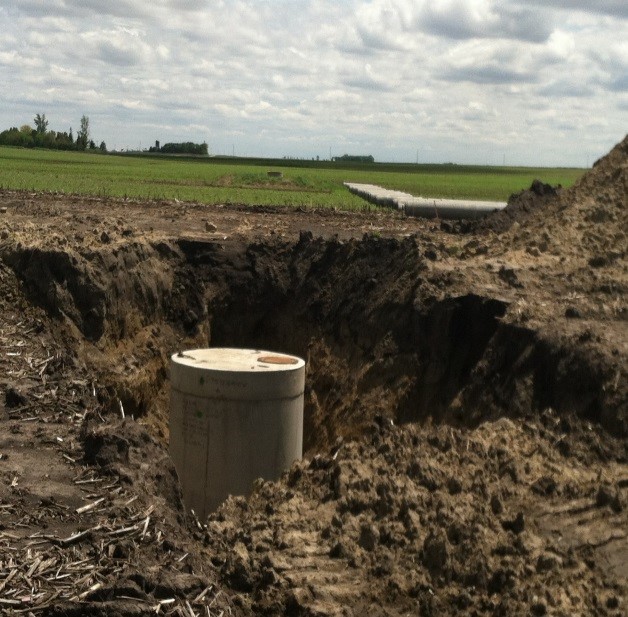
Closed agricultural drainage wells have a cover like this. (Photo courtesy of Iowa Department of Agriculture and Land Stewardship)
The Iowa Department of Agriculture and Land Stewardship announced the last seven agricultural drainage wells in the state have been closed, which represents the end of about 30 years of research and management around the wells that negatively impacted water quality in Iowa.
Following the establishment of the Iowa Groundwater Protection Act in 1987, IDALS developed an inventory of ag drainage wells in the state and found there were 300, with a majority in Humboldt, Pocahontas and Wright counties.
Per the groundwater protection law, the department conducted research on ag drainage wells and in-field nutrient management plans that, according to IDALS had “statewide application in dealing with the water quality concerns about nitrogen and herbicide movement from cropped lands to Iowa’s streams and lakes.”
GET THE MORNING HEADLINES.
Another element of this research found that wetlands could remove up to 90% of nitrogen and herbicides from tile drainage.
Drainage from the last seven ag drainage wells, all near Gilmore City, will be redirected to a 137-acre wetland to help manage water quality of the runoff.
“Improving water quality takes time, commitment, and dedicated funding, but this demonstrates that when there is a strategy and funding in place, this impactful work can get done successfully,” Iowa Secretary of Agriculture Mike Naig said in a news release.
Michael Schmidt, staff attorney for the Iowa Environmental Council, said the issue of ag drainage wells has been part of the council’s priorities since it started in 1995 and advocated for the 1997 law that required the closure of the wells.
“Overall it’s just a big step forward in addressing some of the most direct sources of pollution to ground water,” Schmidt said about the final closures. “It’s too bad that it has taken 30 years to get this far, because it’s common sense not to be using our groundwater as a toilet for our agricultural waste.”

In areas prone to excess water, cropland will have tile, or underground drainage structures, to help drain water out of the fields and into ditches or streams. Ag drainage wells would funnel water from the tile down into bedrock aquifers, meaning any ag chemical or excess nutrients from that field would flow down into aquifers, many of which were also used for drinking water.
Most of these wells were constructed in the early to mid-1900s, and according to the U.S. Environmental Protection Agency more than 95% of all agricultural drainage wells in the country were in Iowa, Idaho, Ohio, Minnesota and Texas.
To date, IDALS has made use of $25 million in state appropriations and an additional $12 million in landowner and partner contributions to close nearly 200 of these wells. The other third of the 300 identified wells were closed by landowners or were non-functioning.
Landowners were also eligible for assistance to close the wells from the Watershed Improvement Review Board.
The final seven wells were closed on Tuesday, following six years of planning and construction around the closures, which according to IDALS, involved eight properties and 13 landowners.
“I’m pleased that we can now close this chapter even as we continue to push forward with our many other water quality and conservation initiatives across the state,” Naig said.
Schmidt called the effort a “big step forward” in addressing some of the major ground water pollution issues in the state.
“This closure process points to a larger trend of recognizing that we have to treat waste, not just send it down stream,” Schmidt said.
YOU MAKE OUR WORK POSSIBLE.

